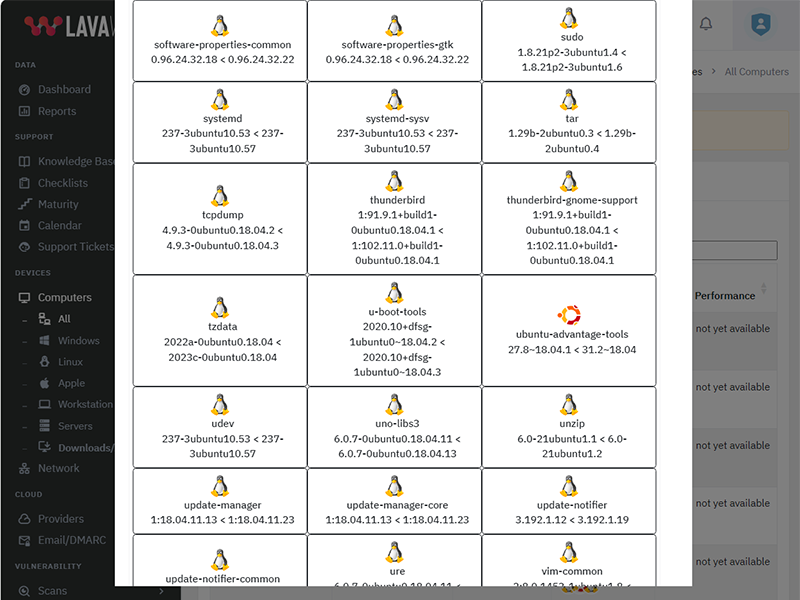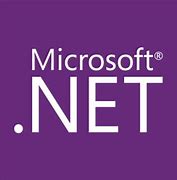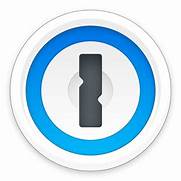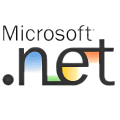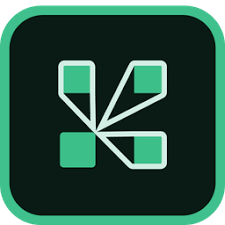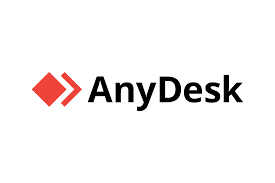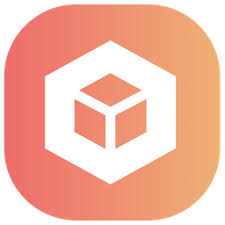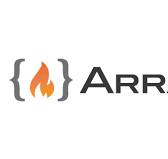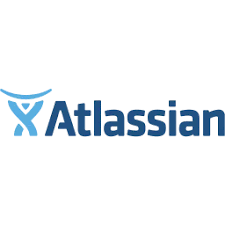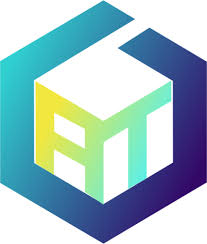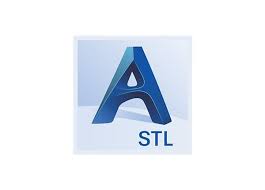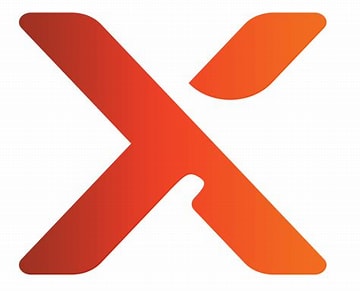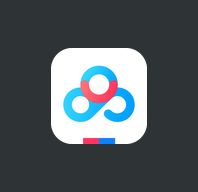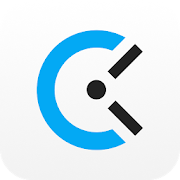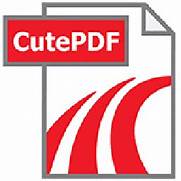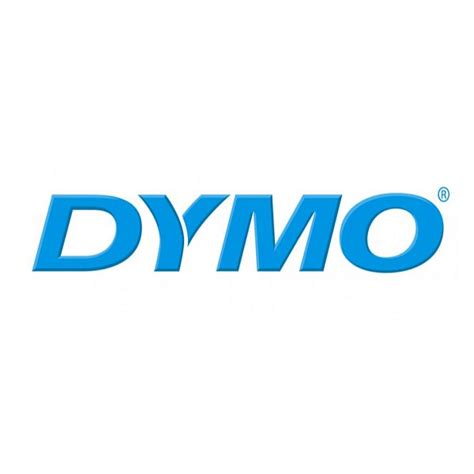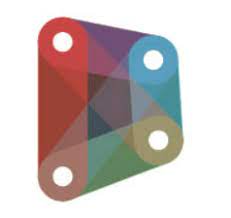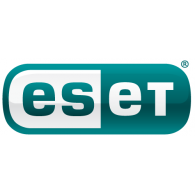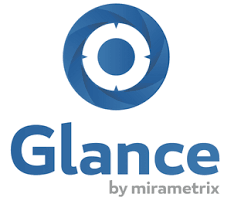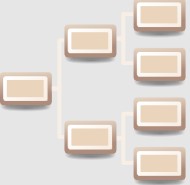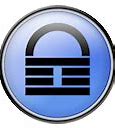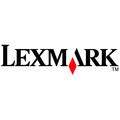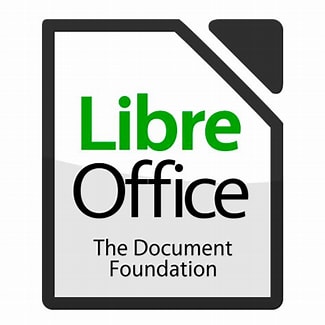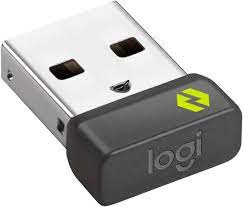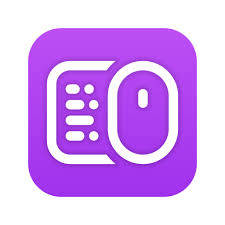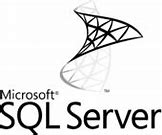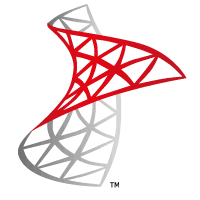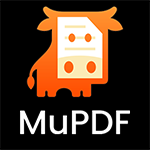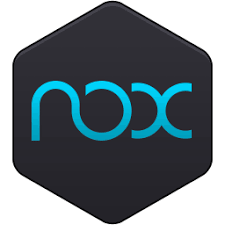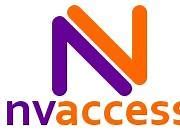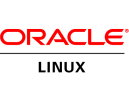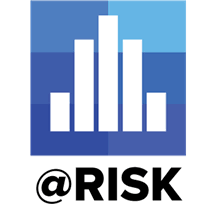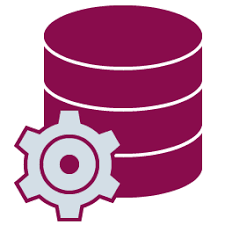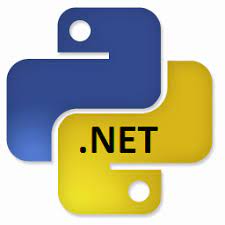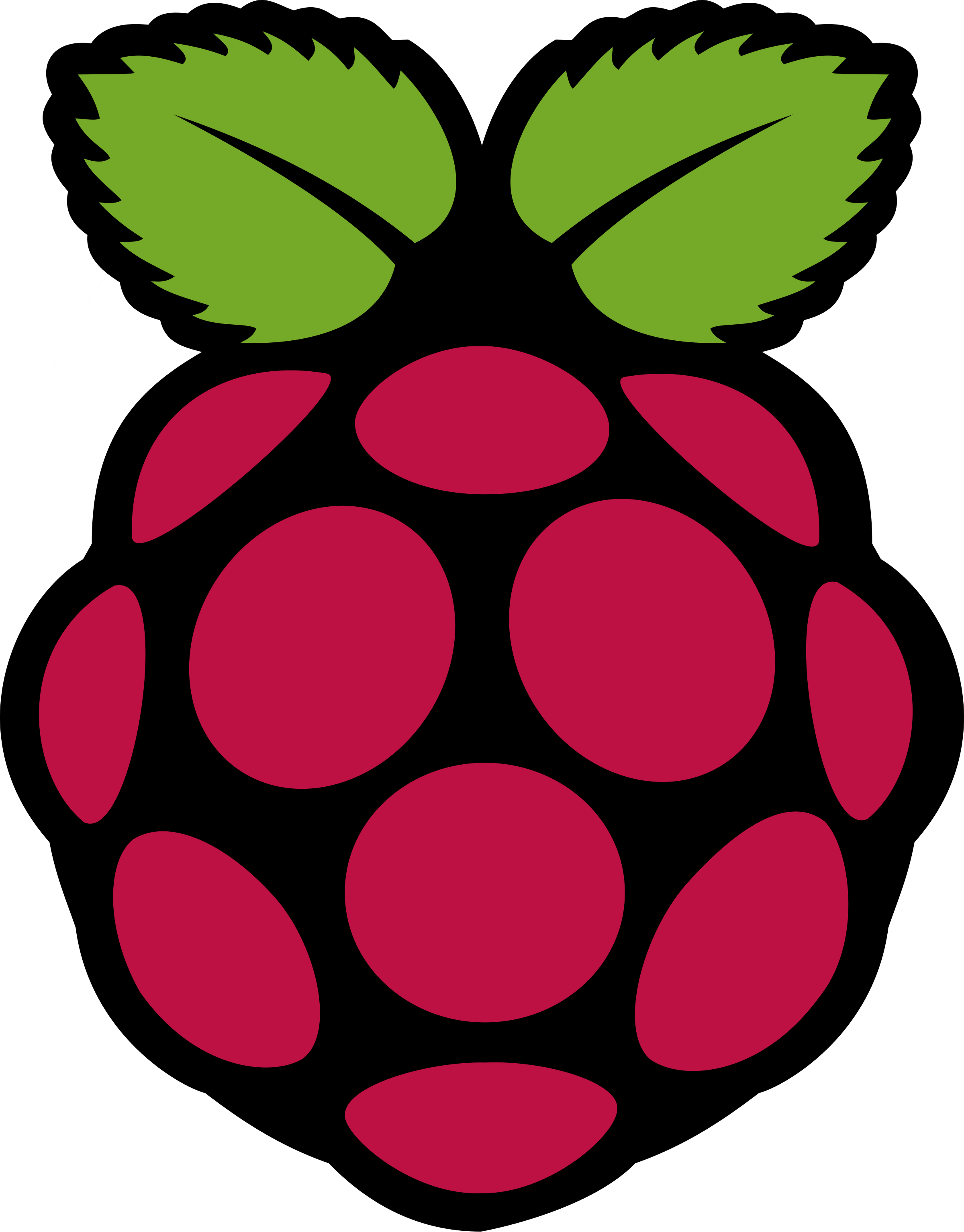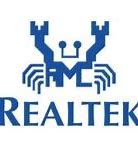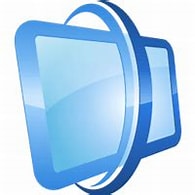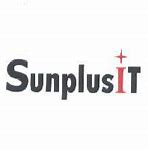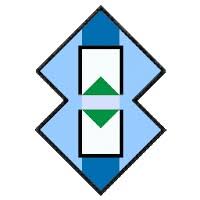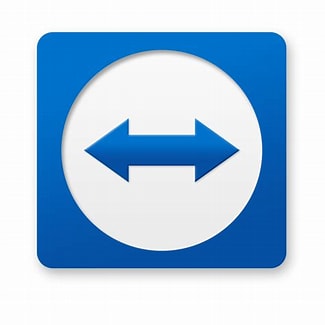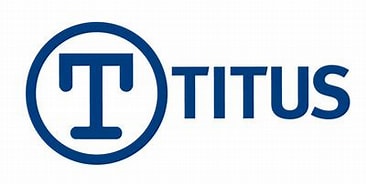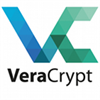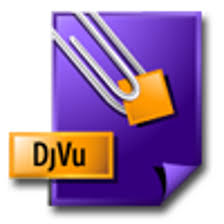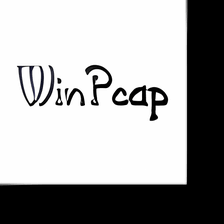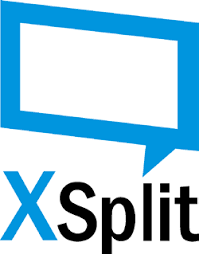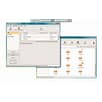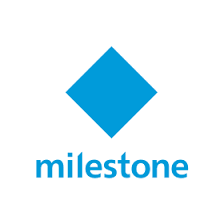
Update GitHub Desktop to version 3.5.4
What patches are you missing?
CVE Vulnerabilities for GitHub Desktop
| CVE | Published | Severity | Details | Exploitability | Impact | Vector |
| CVE‑2025‑48384 | 2025‑07‑08 19:15:43 | HIGH (8) | Git is a fast, scalable, distributed revision control system with an unusually rich command set that provides both high-level operations and full access to internals. When reading a config value, Git strips any trailing carriage return and line feed (CRLF). When writing a config entry, values with a trailing CR are not quoted, causing the CR to be lost when the config is later read. When initializing a submodule, if the submodule path contains a trailing CR, the altered path is read resulting in the submodule being checked out to an incorrect location. If a symlink exists that points the altered path to the submodule hooks directory, and the submodule contains an executable post-checkout hook, the script may be unintentionally executed after checkout. This vulnerability is fixed in v2.43.7, v2.44.4, v2.45.4, v2.46.4, v2.47.3, v2.48.2, v2.49.1, and v2.50.1. | 1 | 6 | NETWORK |
| CVE‑2023‑29012 | 2023‑04‑25 21:15:11 | HIGH (7) | Git for Windows is the Windows port of Git. Prior to version 2.40.1, any user of Git CMD who starts the command in an untrusted directory is impacted by an Uncontrolles Search Path Element vulnerability. Maliciously-placed `doskey.exe` would be executed silently upon running Git CMD. The problem has been patched in Git for Windows v2.40.1. As a workaround, avoid using Git CMD or, if using Git CMD, avoid starting it in an untrusted directory. | 1 | 6 | LOCAL |
| CVE‑2023‑29011 | 2023‑04‑25 21:15:10 | HIGH (8) | Git for Windows, the Windows port of Git, ships with an executable called `connect.exe`, which implements a SOCKS5 proxy that can be used to connect e.g. to SSH servers via proxies when certain ports are blocked for outgoing connections. The location of `connect.exe`'s config file is hard-coded as `/etc/connectrc` which will typically be interpreted as `C:\etc\connectrc`. Since `C:\etc` can be created by any authenticated user, this makes `connect.exe` susceptible to malicious files being placed there by other users on the same multi-user machine. The problem has been patched in Git for Windows v2.40.1. As a workaround, create the folder `etc` on all drives where Git commands are run, and remove read/write access from those folders. Alternatively, watch out for malicious `<drive>:\etc\connectrc` files on multi-user machines. | 2 | 6 | LOCAL |
| CVE‑2023‑29007 | 2023‑04‑25 21:15:10 | HIGH (7) | Git is a revision control system. Prior to versions 2.30.9, 2.31.8, 2.32.7, 2.33.8, 2.34.8, 2.35.8, 2.36.6, 2.37.7, 2.38.5, 2.39.3, and 2.40.1, a specially crafted `.gitmodules` file with submodule URLs that are longer than 1024 characters can used to exploit a bug in `config.c::git_config_copy_or_rename_section_in_file()`. This bug can be used to inject arbitrary configuration into a user's `$GIT_DIR/config` when attempting to remove the configuration section associated with that submodule. When the attacker injects configuration values which specify executables to run (such as `core.pager`, `core.editor`, `core.sshCommand`, etc.) this can lead to a remote code execution. A fix A fix is available in versions 2.30.9, 2.31.8, 2.32.7, 2.33.8, 2.34.8, 2.35.8, 2.36.6, 2.37.7, 2.38.5, 2.39.3, and 2.40.1. As a workaround, avoid running `git submodule deinit` on untrusted repositories or without prior inspection of any submodule sections in `$GIT_DIR/config`. | 1 | 6 | LOCAL |
| CVE‑2023‑25815 | 2023‑04‑25 20:15:10 | LOW (2) | In Git for Windows, the Windows port of Git, no localized messages are shipped with the installer. As a consequence, Git is expected not to localize messages at all, and skips the gettext initialization. However, due to a change in MINGW-packages, the `gettext()` function's implicit initialization no longer uses the runtime prefix but uses the hard-coded path `C:\mingw64\share\locale` to look for localized messages. And since any authenticated user has the permission to create folders in `C:\` (and since `C:\mingw64` does not typically exist), it is possible for low-privilege users to place fake messages in that location where `git.exe` will pick them up in version 2.40.1. This vulnerability is relatively hard to exploit and requires social engineering. For example, a legitimate message at the end of a clone could be maliciously modified to ask the user to direct their web browser to a malicious website, and the user might think that the message comes from Git and is legitimate. It does require local write access by the attacker, though, which makes this attack vector less likely. Version 2.40.1 contains a patch for this issue. Some workarounds are available. Do not work on a Windows machine with shared accounts, or alternatively create a `C:\mingw64` folder and leave it empty. Users who have administrative rights may remove the permission to create folders in `C:\`. | 1 | 1 | LOCAL |
| CVE‑2023‑25652 | 2023‑04‑25 20:15:10 | HIGH (8) | Git is a revision control system. Prior to versions 2.30.9, 2.31.8, 2.32.7, 2.33.8, 2.34.8, 2.35.8, 2.36.6, 2.37.7, 2.38.5, 2.39.3, and 2.40.1, by feeding specially crafted input to `git apply --reject`, a path outside the working tree can be overwritten with partially controlled contents (corresponding to the rejected hunk(s) from the given patch). A fix is available in versions 2.30.9, 2.31.8, 2.32.7, 2.33.8, 2.34.8, 2.35.8, 2.36.6, 2.37.7, 2.38.5, 2.39.3, and 2.40.1. As a workaround, avoid using `git apply` with `--reject` when applying patches from an untrusted source. Use `git apply --stat` to inspect a patch before applying; avoid applying one that create a conflict where a link corresponding to the `*.rej` file exists. | 4 | 4 | NETWORK |
| CVE‑2023‑23946 | 2023‑02‑14 20:15:17 | MEDIUM (6) | Git, a revision control system, is vulnerable to path traversal prior to versions 2.39.2, 2.38.4, 2.37.6, 2.36.5, 2.35.7, 2.34.7, 2.33.7, 2.32.6, 2.31.7, and 2.30.8. By feeding a crafted input to `git apply`, a path outside the working tree can be overwritten as the user who is running `git apply`. A fix has been prepared and will appear in v2.39.2, v2.38.4, v2.37.6, v2.36.5, v2.35.7, v2.34.7, v2.33.7, v2.32.6, v2.31.7, and v2.30.8. As a workaround, use `git apply --stat` to inspect a patch before applying; avoid applying one that creates a symbolic link and then creates a file beyond the symbolic link. | 3 | 4 | LOCAL |
| CVE‑2023‑23618 | 2023‑02‑14 21:15:13 | HIGH (9) | Git for Windows is the Windows port of the revision control system Git. Prior to Git for Windows version 2.39.2, when `gitk` is run on Windows, it potentially runs executables from the current directory inadvertently, which can be exploited with some social engineering to trick users into running untrusted code. A patch is available in version 2.39.2. As a workaround, avoid using `gitk` (or Git GUI's "Visualize History" functionality) in clones of untrusted repositories. | 2 | 6 | LOCAL |
| CVE‑2023‑22743 | 2023‑02‑14 21:15:13 | HIGH (7) | Git for Windows is the Windows port of the revision control system Git. Prior to Git for Windows version 2.39.2, by carefully crafting DLL and putting into a subdirectory of a specific name living next to the Git for Windows installer, Windows can be tricked into side-loading said DLL. This potentially allows users with local write access to place malicious payloads in a location where automated upgrades might run the Git for Windows installer with elevation. Version 2.39.2 contains a patch for this issue. Some workarounds are available. Never leave untrusted files in the Downloads folder or its sub-folders before executing the Git for Windows installer, or move the installer into a different directory before executing it. | 1 | 6 | LOCAL |
| CVE‑2023‑22490 | 2023‑02‑14 20:15:17 | MEDIUM (6) | Git is a revision control system. Using a specially-crafted repository, Git prior to versions 2.39.2, 2.38.4, 2.37.6, 2.36.5, 2.35.7, 2.34.7, 2.33.7, 2.32.6, 2.31.7, and 2.30.8 can be tricked into using its local clone optimization even when using a non-local transport. Though Git will abort local clones whose source `$GIT_DIR/objects` directory contains symbolic links, the `objects` directory itself may still be a symbolic link. These two may be combined to include arbitrary files based on known paths on the victim's filesystem within the malicious repository's working copy, allowing for data exfiltration in a similar manner as CVE-2022-39253. A fix has been prepared and will appear in v2.39.2 v2.38.4 v2.37.6 v2.36.5 v2.35.7 v2.34.7 v2.33.7 v2.32.6, v2.31.7 and v2.30.8. If upgrading is impractical, two short-term workarounds are available. Avoid cloning repositories from untrusted sources with `--recurse-submodules`. Instead, consider cloning repositories without recursively cloning their submodules, and instead run `git submodule update` at each layer. Before doing so, inspect each new `.gitmodules` file to ensure that it does not contain suspicious module URLs. | 2 | 4 | LOCAL |
| CVE‑2022‑41953 | 2023‑01‑17 22:15:11 | HIGH (9) | Git GUI is a convenient graphical tool that comes with Git for Windows. Its target audience is users who are uncomfortable with using Git on the command-line. Git GUI has a function to clone repositories. Immediately after the local clone is available, Git GUI will automatically post-process it, among other things running a spell checker called `aspell.exe` if it was found. Git GUI is implemented as a Tcl/Tk script. Due to the unfortunate design of Tcl on Windows, the search path when looking for an executable _always includes the current directory_. Therefore, malicious repositories can ship with an `aspell.exe` in their top-level directory which is executed by Git GUI without giving the user a chance to inspect it first, i.e. running untrusted code. This issue has been addressed in version 2.39.1. Users are advised to upgrade. Users unable to upgrade should avoid using Git GUI for cloning. If that is not a viable option, at least avoid cloning from untrusted sources. | 2 | 6 | LOCAL |
| CVE‑2022‑41903 | 2023‑01‑17 23:15:16 | CRITICAL (10) | Git is distributed revision control system. `git log` can display commits in an arbitrary format using its `--format` specifiers. This functionality is also exposed to `git archive` via the `export-subst` gitattribute. When processing the padding operators, there is a integer overflow in `pretty.c::format_and_pad_commit()` where a `size_t` is stored improperly as an `int`, and then added as an offset to a `memcpy()`. This overflow can be triggered directly by a user running a command which invokes the commit formatting machinery (e.g., `git log --format=...`). It may also be triggered indirectly through git archive via the export-subst mechanism, which expands format specifiers inside of files within the repository during a git archive. This integer overflow can result in arbitrary heap writes, which may result in arbitrary code execution. The problem has been patched in the versions published on 2023-01-17, going back to v2.30.7. Users are advised to upgrade. Users who are unable to upgrade should disable `git archive` in untrusted repositories. If you expose git archive via `git daemon`, disable it by running `git config --global daemon.uploadArch false`. | 4 | 6 | NETWORK |
| CVE‑2022‑39260 | 2022‑10‑19 12:15:10 | HIGH (9) | Git is an open source, scalable, distributed revision control system. `git shell` is a restricted login shell that can be used to implement Git's push/pull functionality via SSH. In versions prior to 2.30.6, 2.31.5, 2.32.4, 2.33.5, 2.34.5, 2.35.5, 2.36.3, and 2.37.4, the function that splits the command arguments into an array improperly uses an `int` to represent the number of entries in the array, allowing a malicious actor to intentionally overflow the return value, leading to arbitrary heap writes. Because the resulting array is then passed to `execv()`, it is possible to leverage this attack to gain remote code execution on a victim machine. Note that a victim must first allow access to `git shell` as a login shell in order to be vulnerable to this attack. This problem is patched in versions 2.30.6, 2.31.5, 2.32.4, 2.33.5, 2.34.5, 2.35.5, 2.36.3, and 2.37.4 and users are advised to upgrade to the latest version. Disabling `git shell` access via remote logins is a viable short-term workaround. | 3 | 6 | NETWORK |
| CVE‑2022‑39253 | 2022‑10‑19 11:15:11 | MEDIUM (6) | Git is an open source, scalable, distributed revision control system. Versions prior to 2.30.6, 2.31.5, 2.32.4, 2.33.5, 2.34.5, 2.35.5, 2.36.3, and 2.37.4 are subject to exposure of sensitive information to a malicious actor. When performing a local clone (where the source and target of the clone are on the same volume), Git copies the contents of the source's `$GIT_DIR/objects` directory into the destination by either creating hardlinks to the source contents, or copying them (if hardlinks are disabled via `--no-hardlinks`). A malicious actor could convince a victim to clone a repository with a symbolic link pointing at sensitive information on the victim's machine. This can be done either by having the victim clone a malicious repository on the same machine, or having them clone a malicious repository embedded as a bare repository via a submodule from any source, provided they clone with the `--recurse-submodules` option. Git does not create symbolic links in the `$GIT_DIR/objects` directory. The problem has been patched in the versions published on 2022-10-18, and backported to v2.30.x. Potential workarounds: Avoid cloning untrusted repositories using the `--local` optimization when on a shared machine, either by passing the `--no-local` option to `git clone` or cloning from a URL that uses the `file://` scheme. Alternatively, avoid cloning repositories from untrusted sources with `--recurse-submodules` or run `git config --global protocol.file.allow user`. | 2 | 4 | LOCAL |
| CVE‑2022‑29187 | 2022‑07‑12 21:15:10 | HIGH (8) | Git is a distributed revision control system. Git prior to versions 2.37.1, 2.36.2, 2.35.4, 2.34.4, 2.33.4, 2.32.3, 2.31.4, and 2.30.5, is vulnerable to privilege escalation in all platforms. An unsuspecting user could still be affected by the issue reported in CVE-2022-24765, for example when navigating as root into a shared tmp directory that is owned by them, but where an attacker could create a git repository. Versions 2.37.1, 2.36.2, 2.35.4, 2.34.4, 2.33.4, 2.32.3, 2.31.4, and 2.30.5 contain a patch for this issue. The simplest way to avoid being affected by the exploit described in the example is to avoid running git as root (or an Administrator in Windows), and if needed to reduce its use to a minimum. While a generic workaround is not possible, a system could be hardened from the exploit described in the example by removing any such repository if it exists already and creating one as root to block any future attacks. | 2 | 6 | LOCAL |
| CVE‑2022‑24975 | 2022‑02‑11 20:15:08 | HIGH (8) | The --mirror documentation for Git through 2.35.1 does not mention the availability of deleted content, aka the "GitBleed" issue. This could present a security risk if information-disclosure auditing processes rely on a clone operation without the --mirror option. Note: This has been disputed by multiple 3rd parties who believe this is an intended feature of the git binary and does not pose a security risk. | 4 | 4 | NETWORK |
| CVE‑2022‑24767 | 2022‑04‑12 18:15:10 | HIGH (8) | GitHub: Git for Windows' uninstaller vulnerable to DLL hijacking when run under the SYSTEM user account. | 2 | 6 | LOCAL |
| CVE‑2022‑24765 | 2022‑04‑12 18:15:09 | HIGH (8) | Git for Windows is a fork of Git containing Windows-specific patches. This vulnerability affects users working on multi-user machines, where untrusted parties have write access to the same hard disk. Those untrusted parties could create the folder `C:\.git`, which would be picked up by Git operations run supposedly outside a repository while searching for a Git directory. Git would then respect any config in said Git directory. Git Bash users who set `GIT_PS1_SHOWDIRTYSTATE` are vulnerable as well. Users who installed posh-gitare vulnerable simply by starting a PowerShell. Users of IDEs such as Visual Studio are vulnerable: simply creating a new project would already read and respect the config specified in `C:\.git\config`. Users of the Microsoft fork of Git are vulnerable simply by starting a Git Bash. The problem has been patched in Git for Windows v2.35.2. Users unable to upgrade may create the folder `.git` on all drives where Git commands are run, and remove read/write access from those folders as a workaround. Alternatively, define or extend `GIT_CEILING_DIRECTORIES` to cover the _parent_ directory of the user profile, e.g. `C:\Users` if the user profile is located in `C:\Users\my-user-name`. | 2 | 6 | LOCAL |
| CVE‑2022‑23521 | 2023‑01‑17 23:15:16 | CRITICAL (10) | Git is distributed revision control system. gitattributes are a mechanism to allow defining attributes for paths. These attributes can be defined by adding a `.gitattributes` file to the repository, which contains a set of file patterns and the attributes that should be set for paths matching this pattern. When parsing gitattributes, multiple integer overflows can occur when there is a huge number of path patterns, a huge number of attributes for a single pattern, or when the declared attribute names are huge. These overflows can be triggered via a crafted `.gitattributes` file that may be part of the commit history. Git silently splits lines longer than 2KB when parsing gitattributes from a file, but not when parsing them from the index. Consequentially, the failure mode depends on whether the file exists in the working tree, the index or both. This integer overflow can result in arbitrary heap reads and writes, which may result in remote code execution. The problem has been patched in the versions published on 2023-01-17, going back to v2.30.7. Users are advised to upgrade. There are no known workarounds for this issue. | 4 | 6 | NETWORK |
| CVE‑2021‑40330 | 2021‑08‑31 04:15:11 | HIGH (8) | git_connect_git in connect.c in Git before 2.30.1 allows a repository path to contain a newline character, which may result in unexpected cross-protocol requests, as demonstrated by the git://localhost:1234/%0d%0a%0d%0aGET%20/%20HTTP/1.1 substring. | 4 | 4 | NETWORK |
| CVE‑2021‑21300 | 2021‑03‑09 20:15:13 | HIGH (8) | Git is an open-source distributed revision control system. In affected versions of Git a specially crafted repository that contains symbolic links as well as files using a clean/smudge filter such as Git LFS, may cause just-checked out script to be executed while cloning onto a case-insensitive file system such as NTFS, HFS+ or APFS (i.e. the default file systems on Windows and macOS). Note that clean/smudge filters have to be configured for that. Git for Windows configures Git LFS by default, and is therefore vulnerable. The problem has been patched in the versions published on Tuesday, March 9th, 2021. As a workaound, if symbolic link support is disabled in Git (e.g. via `git config --global core.symlinks false`), the described attack won't work. Likewise, if no clean/smudge filters such as Git LFS are configured globally (i.e. _before_ cloning), the attack is foiled. As always, it is best to avoid cloning repositories from untrusted sources. The earliest impacted version is 2.14.2. The fix versions are: 2.30.1, 2.29.3, 2.28.1, 2.27.1, 2.26.3, 2.25.5, 2.24.4, 2.23.4, 2.22.5, 2.21.4, 2.20.5, 2.19.6, 2.18.5, 2.17.62.17.6. | 2 | 6 | NETWORK |
| CVE‑2020‑5260 | 2020‑04‑14 23:15:13 | CRITICAL (9) | Affected versions of Git have a vulnerability whereby Git can be tricked into sending private credentials to a host controlled by an attacker. Git uses external "credential helper" programs to store and retrieve passwords or other credentials from secure storage provided by the operating system. Specially-crafted URLs that contain an encoded newline can inject unintended values into the credential helper protocol stream, causing the credential helper to retrieve the password for one server (e.g., good.example.com) for an HTTP request being made to another server (e.g., evil.example.com), resulting in credentials for the former being sent to the latter. There are no restrictions on the relationship between the two, meaning that an attacker can craft a URL that will present stored credentials for any host to a host of their choosing. The vulnerability can be triggered by feeding a malicious URL to git clone. However, the affected URLs look rather suspicious; the likely vector would be through systems which automatically clone URLs not visible to the user, such as Git submodules, or package systems built around Git. The problem has been patched in the versions published on April 14th, 2020, going back to v2.17.x. Anyone wishing to backport the change further can do so by applying commit 9a6bbee (the full release includes extra checks for git fsck, but that commit is sufficient to protect clients against the vulnerability). The patched versions are: 2.17.4, 2.18.3, 2.19.4, 2.20.3, 2.21.2, 2.22.3, 2.23.2, 2.24.2, 2.25.3, 2.26.1. | 3 | 6 | NETWORK |
| CVE‑2020‑11008 | 2020‑04‑21 19:15:13 | MEDIUM (4) | Affected versions of Git have a vulnerability whereby Git can be tricked into sending private credentials to a host controlled by an attacker. This bug is similar to CVE-2020-5260(GHSA-qm7j-c969-7j4q). The fix for that bug still left the door open for an exploit where _some_ credential is leaked (but the attacker cannot control which one). Git uses external "credential helper" programs to store and retrieve passwords or other credentials from secure storage provided by the operating system. Specially-crafted URLs that are considered illegal as of the recently published Git versions can cause Git to send a "blank" pattern to helpers, missing hostname and protocol fields. Many helpers will interpret this as matching _any_ URL, and will return some unspecified stored password, leaking the password to an attacker's server. The vulnerability can be triggered by feeding a malicious URL to `git clone`. However, the affected URLs look rather suspicious; the likely vector would be through systems which automatically clone URLs not visible to the user, such as Git submodules, or package systems built around Git. The root of the problem is in Git itself, which should not be feeding blank input to helpers. However, the ability to exploit the vulnerability in practice depends on which helpers are in use. Credential helpers which are known to trigger the vulnerability: - Git's "store" helper - Git's "cache" helper - the "osxkeychain" helper that ships in Git's "contrib" directory Credential helpers which are known to be safe even with vulnerable versions of Git: - Git Credential Manager for Windows Any helper not in this list should be assumed to trigger the vulnerability. | 2 | 1 | NETWORK |
| CVE‑2019‑19604 | 2019‑12‑11 00:15:13 | HIGH (8) | Arbitrary command execution is possible in Git before 2.20.2, 2.21.x before 2.21.1, 2.22.x before 2.22.2, 2.23.x before 2.23.1, and 2.24.x before 2.24.1 because a "git submodule update" operation can run commands found in the .gitmodules file of a malicious repository. | 2 | 6 | LOCAL |
| CVE‑2019‑1387 | 2019‑12‑18 21:15:14 | HIGH (9) | An issue was found in Git before v2.24.1, v2.23.1, v2.22.2, v2.21.1, v2.20.2, v2.19.3, v2.18.2, v2.17.3, v2.16.6, v2.15.4, and v2.14.6. Recursive clones are currently affected by a vulnerability that is caused by too-lax validation of submodule names, allowing very targeted attacks via remote code execution in recursive clones. | 3 | 6 | NETWORK |
| CVE‑2019‑1353 | 2020‑01‑24 22:15:19 | CRITICAL (10) | An issue was found in Git before v2.24.1, v2.23.1, v2.22.2, v2.21.1, v2.20.2, v2.19.3, v2.18.2, v2.17.3, v2.16.6, v2.15.4, and v2.14.6. When running Git in the Windows Subsystem for Linux (also known as "WSL") while accessing a working directory on a regular Windows drive, none of the NTFS protections were active. | 4 | 6 | NETWORK |
| CVE‑2019‑1348 | 2020‑01‑24 22:15:19 | LOW (3) | An issue was found in Git before v2.24.1, v2.23.1, v2.22.2, v2.21.1, v2.20.2, v2.19.3, v2.18.2, v2.17.3, v2.16.6, v2.15.4, and v2.14.6. The --export-marks option of git fast-import is exposed also via the in-stream command feature export-marks=... and it allows overwriting arbitrary paths. | 2 | 1 | LOCAL |
| CVE‑2018‑19486 | 2018‑11‑23 08:29:00 | HIGH (8) | Git before 2.19.2 on Linux and UNIX executes commands from the current working directory (as if '.' were at the end of $PATH) in certain cases involving the run_command() API and run-command.c, because there was a dangerous change from execvp to execv during 2017. | 0 | 0 | NETWORK |
| CVE‑2018‑17456 | 2018‑10‑06 14:29:00 | HIGH (8) | Git before 2.14.5, 2.15.x before 2.15.3, 2.16.x before 2.16.5, 2.17.x before 2.17.2, 2.18.x before 2.18.1, and 2.19.x before 2.19.1 allows remote code execution during processing of a recursive "git clone" of a superproject if a .gitmodules file has a URL field beginning with a '-' character. | 0 | 0 | NETWORK |
| CVE‑2018‑11235 | 2018‑05‑30 04:29:00 | MEDIUM (7) | In Git before 2.13.7, 2.14.x before 2.14.4, 2.15.x before 2.15.2, 2.16.x before 2.16.4, and 2.17.x before 2.17.1, remote code execution can occur. With a crafted .gitmodules file, a malicious project can execute an arbitrary script on a machine that runs "git clone --recurse-submodules" because submodule "names" are obtained from this file, and then appended to $GIT_DIR/modules, leading to directory traversal with "../" in a name. Finally, post-checkout hooks from a submodule are executed, bypassing the intended design in which hooks are not obtained from a remote server. | 0 | 0 | NETWORK |
| CVE‑2018‑11233 | 2018‑05‑30 04:29:00 | MEDIUM (5) | In Git before 2.13.7, 2.14.x before 2.14.4, 2.15.x before 2.15.2, 2.16.x before 2.16.4, and 2.17.x before 2.17.1, code to sanity-check pathnames on NTFS can result in reading out-of-bounds memory. | 0 | 0 | NETWORK |
| CVE‑2018‑100002 | 2018‑02‑09 23:29:01 | MEDIUM (7) | GIT version 2.15.1 and earlier contains a Input Validation Error vulnerability in Client that can result in problems including messing up terminal configuration to RCE. This attack appear to be exploitable via The user must interact with a malicious git server, (or have their traffic modified in a MITM attack). | 0 | 0 | NETWORK |
| CVE‑2017‑15298 | 2017‑10‑14 22:29:00 | MEDIUM (4) | Git through 2.14.2 mishandles layers of tree objects, which allows remote attackers to cause a denial of service (memory consumption) via a crafted repository, aka a Git bomb. This can also have an impact of disk consumption; however, an affected process typically would not survive its attempt to build the data structure in memory before writing to disk. | 0 | 0 | NETWORK |
| CVE‑2017‑14867 | 2017‑09‑29 01:34:50 | HIGH (9) | Git before 2.10.5, 2.11.x before 2.11.4, 2.12.x before 2.12.5, 2.13.x before 2.13.6, and 2.14.x before 2.14.2 uses unsafe Perl scripts to support subcommands such as cvsserver, which allows attackers to execute arbitrary OS commands via shell metacharacters in a module name. The vulnerable code is reachable via git-shell even without CVS support. | 0 | 0 | NETWORK |
| CVE‑2016‑9274 | 2016‑11‑11 17:59:00 | HIGH (8) | Untrusted search path vulnerability in Git 1.x for Windows allows local users to gain privileges via a Trojan horse git.exe file in the current working directory. NOTE: 2.x is unaffected. | 2 | 6 | LOCAL |
| CVE‑2016‑2324 | 2016‑04‑08 14:59:02 | CRITICAL (10) | Integer overflow in Git before 2.7.4 allows remote attackers to execute arbitrary code via a (1) long filename or (2) many nested trees, which triggers a heap-based buffer overflow. | 4 | 6 | NETWORK |
| CVE‑2016‑2315 | 2016‑04‑08 14:59:01 | CRITICAL (10) | revision.c in git before 2.7.4 uses an incorrect integer data type, which allows remote attackers to execute arbitrary code via a (1) long filename or (2) many nested trees, leading to a heap-based buffer overflow. | 4 | 6 | NETWORK |
| CVE‑2014‑9938 | 2017‑03‑20 00:59:00 | HIGH (9) | contrib/completion/git-prompt.sh in Git before 1.9.3 does not sanitize branch names in the PS1 variable, allowing a malicious repository to cause code execution. | 3 | 6 | NETWORK |
| CVE‑2014‑9390 | 2020‑02‑12 02:15:11 | CRITICAL (10) | Git before 1.8.5.6, 1.9.x before 1.9.5, 2.0.x before 2.0.5, 2.1.x before 2.1.4, and 2.2.x before 2.2.1 on Windows and OS X; Mercurial before 3.2.3 on Windows and OS X; Apple Xcode before 6.2 beta 3; mine all versions before 08-12-2014; libgit2 all versions up to 0.21.2; Egit all versions before 08-12-2014; and JGit all versions before 08-12-2014 allow remote Git servers to execute arbitrary commands via a tree containing a crafted .git/config file with (1) an ignorable Unicode codepoint, (2) a git~1/config representation, or (3) mixed case that is improperly handled on a case-insensitive filesystem. | 4 | 6 | NETWORK |
| CVE‑2013‑0308 | 2013‑03‑08 21:55:03 | MEDIUM (4) | The imap-send command in GIT before 1.8.1.4 does not verify that the server hostname matches a domain name in the subject's Common Name (CN) or subjectAltName field of the X.509 certificate, which allows man-in-the-middle attackers to spoof SSL servers via an arbitrary valid certificate. | 0 | 0 | NETWORK |
| CVE‑2010‑3906 | 2010‑12‑17 19:00:21 | MEDIUM (4) | Cross-site scripting (XSS) vulnerability in Gitweb 1.7.3.3 and earlier allows remote attackers to inject arbitrary web script or HTML via the (1) f and (2) fp parameters. | 0 | 0 | NETWORK |
| CVE‑2010‑2542 | 2010‑08‑11 18:47:51 | HIGH (8) | Stack-based buffer overflow in the is_git_directory function in setup.c in Git before 1.7.2.1 allows local users to gain privileges via a long gitdir: field in a .git file in a working copy. | 0 | 0 | NETWORK |


Get the IT stuff done that nobody wants to do.
Patch more applications, achieve compliance, and prevent problems while reducing stress with Lavawall®.
Security First
A security tool by security auditors. From Passkeys and Argon2i to source validation and MVSP principles, Lavawall® has you covered.
Constant Improvement
More features and more security added nearly every day.
More patchable programs added every week
While Ninite and other patching tools have had the same patch offerings for decades, we're monitoring stats to keep adding the most useful prorgams.
Details matter
From wrapping TLS communications in extra encryption and uninstalling remote support tools when they aren't used to detailed statistical analysis of system and network performance, Lavawall® goes in-depth.
Chromium extensions and Notification Validation
Lavawall®p; goes beyond patches and breach detection. We also monitor for risky Chromium extensions and allowed notifications that might be part of a phishing or ransomware attack.
Extended Cloud Security
Extend the security features of Cloudflare, Microsoft, Google, Sophos, and other cloud providers to create a Lavawall® of protection
Secure Remote Management
Even if you used breached remote management tools like ScreenConnect through Lavawall® when it was vulnerable, your computers stayed safe because we only install the agent when it needs to be used.
Integrations and automation
Easily deploy, monitor, and analyze security tools like Huntress, AutoElevate, and Sophos. Magically gain details from ZenDesk, ConnectWise, Datto, Panorama9, Microsoft, and Google.
Human and automated support
Get immediate fixes, user notifications, admin notifications -- and even security-certified human level 3 support when our advanced statistical analysis confirms a problem or anomaly.
| 2025‑10‑02 | 1.0.82.360 | Processes and Packages improvements |
| 2025‑09‑23 | 1.0.79.357 | |
| 2025‑07‑16 | 1.0.42.320 | |
| 2025‑06‑13 | 1.0.14.292 | |
| 2025‑06‑03 | 1.0.2.280 | |
| 2025‑05‑12 | 0.12.77.264 | |
| 2025‑05‑07 | 0.12.76.263 | add tpm complience check and ensure consistent memory gathering in windows/linux/mac |
| 2025‑05‑05 | 0.12.74.261 | add tpm complience check and ensure consistent memory gathering in windows/linux/mac |
| 2025‑04‑23 | 0.12.68.255 | Uninstallation and update refinements |
| 2025‑04‑17 | 0.12.66.253 | Reliability improvements |
| 2025‑04‑15 | 0.12.65.252 | |
| 2025‑03‑27 | 0.12.64.251 | Add efficiency to package management system |
| 2025‑03‑10 | 0.12.60.247 | |
| 2025‑03‑04 | 0.12.58.245 | |
| 2025‑03‑03 | 0.12.57.244 | Add TPM complience check and ensure consistent memory gathering in windows/linux/mac |
| 2025‑02‑28 | 0.12.56.243 | Windows RAM reporting and persistent scalability framework enhancements |
| 2025‑02‑27 | 0.12.55.242 | Battery health refinements |
| 2025‑02‑26 | 0.12.54.241 | Add battery health statistics |
| 2025‑02‑26 | 0.12.53.240 | |
| 2025‑01‑29 | 0.12.35.222 | Risk score refinements |
| 2025‑01‑17 | 0.12.29.216 | Enhanced compliance and non-standard AV |
| 2025‑01‑13 | 0.12.28.215 | Improved process graphs |
| 2025‑01‑07 | 0.12.27.214 | Antivirus details, compliance |
| 2024‑12‑27 | 0.12.24.211 | |
| 2024‑12‑02 | 0.12.19.206 | |
| 2024‑11‑22 | 0.12.18.205 | |
| 2024‑10‑30 | 0.12.8.195 | Mac update refinements |
| 2024‑10‑25 | 0.12.3.190 | |
| 2024‑10‑21 | 0.12.0.187 | Macos implementaiton, linux and windows improvements |
| 2024‑10‑16 | 0.11.128.186 | Linux stats and system information improvements, improvements for application shutdown |
| 2024‑09‑12 | 0.11.113.171 | CPU Optimizations and Packages reliability improvements |
| 2024‑09‑05 | 0.11.106.164 | Phased deployment enhancements |
| 2024‑09‑04 | 0.11.103.161 | |
| 2024‑09‑02 | 0.11.102.160 | CPU Optimizations and Packages reliability improvements |
| 2024‑08‑30 | 0.11.99.157 | CPU Optimizations and Packages reliability improvements |
| 2024‑08‑29 | 0.11.98.156 | CPU utilization and console event optimization |
| 2024‑08‑28 | 0.11.97.155 | Reliability to detect unusual updates like redistributables. |
| 2024‑08‑27 | 0.11.96.154 | |
| 2024‑08‑26 | 0.11.95.153 | Faster response for reboot requests |
| 2024‑08‑20 | 0.11.92.150 | Additional package upgrade pre-requisites |
| 2024‑08‑15 | 0.11.89.147 | |
| 2024‑08‑06 | 0.11.87.145 | |
| 2024‑07‑26 | 0.11.83.141 | Add resiliency for MAC duplicates and uptime |
| 2024‑07‑25 | 0.11.82.140 | Changes to facilitate cross-platform use. Bitlocker and Windows key refinements |
| 2024‑07‑15 | 0.11.80.138 | Antivirus and temperature added to configuration checks |
| 2024‑07‑15 | 0.11.79.137 | Add configuration checks for execution policy and secure boot |
| 2024‑07‑11 | 0.11.77.135 | load balancing refinements |
| 2024‑07‑10 | 0.11.76.134 | Add additional load balancing and data residency capabilities, add randomness to recurring task timings to decrease server load |
| 2024‑07‑05 | 0.11.74.132 | changes to graph and residual work on user imporsonation |
| 2024‑07‑04 | 0.11.73.131 | Add configuration checks for execution policy and secure boot. |
| 2024‑05‑20 | 253 | Added cleanup of old .json files during a re-install |
| 2024‑05‑13 | 252 | Added apt-get update to install |
| 2024‑05‑06 | 248 | Allow restart to use /var/run/reboot-required if needrestart is not installed |
| 2024‑04‑22 | 239 | Improve internal update and version tracking |
| 2024‑04‑15 | 235 | Add support for Yum packages |
| 2024‑04‑08 | 233 | Align patching with Windows patch reporting |
| 2024‑04‑02 | 228 | Add support for needrestart |
| 2024‑03‑04 | 224 | Schedule restarts |
| 2024‑03‑25 | 221 | Add support for apt packages |
| 2024‑03‑18 | 212 | Implement release management |
| 2024‑03‑11 | 202 | Add user login monitoring |
| 2024‑03‑04 | 189 | Enhance installation reliability |
| 2024‑02‑26 | 187 | Exapand triggers to identify if the instance needs to be restarted |
| 2024‑02‑19 | 146 | Improve compatibility for non-AWS instances |
| 2024‑02‑14 | 138 | Add self-uninstall capabilities |
| 2024‑02‑12 | 135 | Enhance scheduling flexibility |
| 2024‑02‑07 | 132 | Add kernel version tracking |
| 2024‑02‑05 | 124 | Add device hash to cryptographic self-update script validation |
| 2024‑01‑29 | 107 | Enhance encryption of patch data |
| 2024‑01‑22 | 98 | Improve how available storage is calculated |
| 2024‑01‑15 | 97 | Move initial tasks from installation file to sub scripts |
| 2024‑05‑21 | 91 | Improve multi-distribution compatibility |
| 2024‑05‑21 | 79 | Improve encryption reliability |
| 2023‑12‑11 | 68 | Enhance cryptographic validation of new scripts before updating |
| 2023‑11‑20 | 62 | Add inner layer of AES encryption in case TLS inspection doesn't allow for a secure connection |
| 2023‑11‑27 | 56 | Additional base cases for resiliancy |
| 2023‑11‑20 | 54 | Additional headers added to authentication process during installation. |
| 2023‑11‑20 | 53 | Enhanced key management |
| 2023‑11‑15 | 51 | Add insecure installation parameter to allow installation in environments with TLS inspection or other machine-in-the-middle situations. |
| 2023‑11‑06 | 42 | Enhance redundant encryption during installation. |
| 2023‑10‑30 | 33 | Improve install-over compatibility |
| 2023‑10‑23 | 18 | Add reboot configuration and scheduling |
| 2023‑10‑23 | 17 | Add self-updating functionality. |
| 2023‑10‑16 | 15 | Add Linux patching information for apt |
| 2023‑10‑09 | 14 | Collect system information |
| 2023‑10‑09 | 13 | Add Linux distribution information |
| 2023‑09‑30 | 12 | Add memory monitoring |
| 2023‑09‑30 | 10 | Add hardware information |
| 2023‑09‑23 | 9 | Add AWS information |
| 2023‑09‑23 | 8 | Add customized schedule capability for configuration updates |
| 2023‑09‑23 | 7 | Add support for package monitoring using package and dpkg logs |
| 2023‑09‑16 | 6 | Add storage data configuration gathering |
| 2023‑09‑16 | 5 | Add CPU information |
Lavawall® was built from the ground up with these concerns and the Minimum Viable Secure Product requirements in mind.
Some of the controls we implemented include:
- PassKeys as the preferred primary authentication at no additional cost
- Single Sign-on using modern, maintained, and industry-standard protocols for all customers at no additional cost
- Multi-Factor Authentication as a non-negotiable default
- Encrypting communications the same way as TLS again within the TLS tunnel, so we can allow TLS inspection without breaking like Huntress or disclosing security vulnerabilities to eavesdroppers.
- Encouraging external vulnerability reports and customer testing
- Passwords checked against popular disclosed passwords, hashed before they leave your computer, and then stored using Argon2id
- Not requiring the use of passwords at all. We consider them a temporary backup authentication in case you can't use passkeys or SSO.
Lavawall® databases and front-end systems are hosted with AWS in Montréal, Québec, Canada.
We send emails through AWS in Ireland and dedicated servers in Calgary, Alberta, Canada.
We send text messages for additional identity verification through Twilio in the United States.
We store executables and pass requests through Cloudflare at your nearest edge location.
We use Cloudflare for risk management, turnstile, and web application firewall services.
We use LeadPages for landing pages.
We use Google and Facebook for analytics on our public-facing pages, but they do not have access to the console.
We integrate with third-party tools, such as Microsoft, Google, Huntress, Screen Connect, Axcient, and Datto in their respective locations. However, you must initiate these integrations through single sign-on or by enabling them in your Lavawall® console.
Active security by design
Lavawall® is under active development with the latest release on
5+
Interfaces
150+
Monitored Applications
7+
System Metrics
Actively manage your IT with Lavawall®
Patching
Updates Beyond Windows
Lavawall® prevents the 80% of breaches and failed audits due to missing patches and updates.
You can reduce application patching delays from 67 days to nearly immediate with the 150+ applications that Lavawall® monitors and patches.
Patch release monitoring
Monitor everything without having to select packages or “managed applications”
Patch impact classification
Standard and optional Windows patches
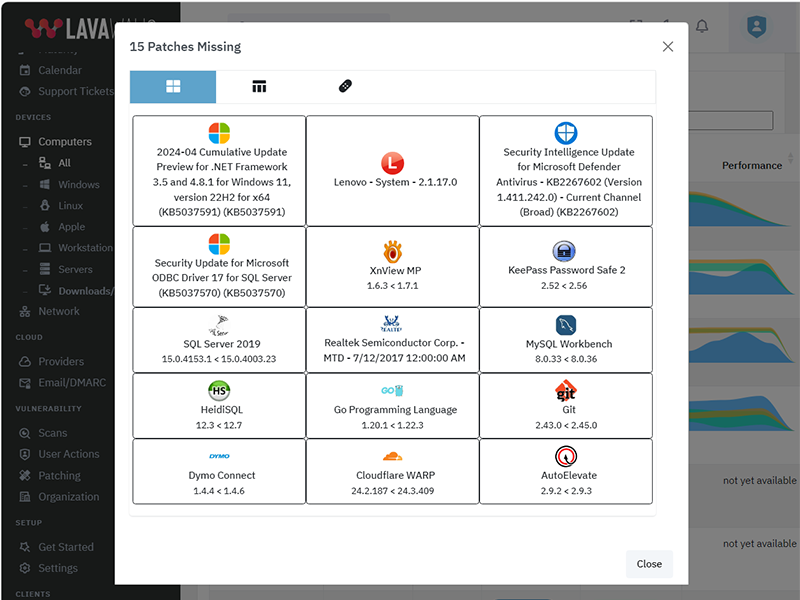
The above listing includes products that Lavawall® monitors through public information and/or proprietary statistical analysis.
Although we do have a partner relationship with some of the listed products and companies, they do not necessarily endorse Lavawall® or have integrations with our systems.
Learn More

Flexible Term; Flexible Service
Flexibility for your dynamic business
You need to get your arms around compliance and security and don't want to get locked into “high watermark” monthly invoices or multi-year contracts.
Pay-as-you-need monthly pricing
DIY, full management, and coaching options
CMMI, PCI, SOC2, Canadian Cybersecurity, Minimum Viable Secure Product, and other compliance support
Choose the plan that's right for you
Simple pricing. No hidden fees. Advanced features for you business.
Month
Annual
Get 2 months free with Annual!
DIY
Security-focused RMM
C$3.25 /computer/Month
C$32.50 /computer/Year
-
1 computer
or 1 of the following cloud integrations:
AWS, Axcient, Connectwise, Datto, Google, Huntress, M365, Sophos Central integrations
(each integration counts as 1 computer) -
150+ application patches
-
30-day Logs
-
Security configuration monitoring
-
Anomaly detection
-
CMMI, MVSP, CyberCanda compliance
-
Lavawall® support
-
Sophos MDR: C$13.50/desktopSophos MDR: C$162/desktop
-
Huntress: C$5.40/deviceHuntress: C$64.80/device
-
Available white-label support for end users
-
Level 3+ IT support for IT
-
Weekly IT coaching sessions
Managed Security & Support
Unlimited end-user support
C$160 /user/Month
C$1,600 /user/Year
-
1 computer/user
Additional devices charged at DIY prices -
AWS, Axcient, Connectwise, Datto, Google, Huntress, M365, Sophos Central integrations
-
150+ application patches
-
90-day Logs
-
Security configuration monitoring
-
Anomaly detection
-
CMMI, MVSP, CyberCanda compliance
-
Lavawall® support
-
Sophos MDR Essentials
-
Huntress
-
White-label email and phone support for end users
-
Level 3+ IT support for IT
-
Weekly IT coaching sessions
-
Automatic discount and upgrade to Support & Coaching after 15 users
Support & Coaching
Improve your IT performance
$2,250 /Month
$22,500 /Year
-
25 computers included
Additional computers charged at DIY prices -
AWS, Axcient, Connectwise, Datto, Google, Huntress, M365, Sophos Central integrations
-
150+ application patches
-
90-day Logs
-
Security configuration monitoring
-
Anomaly detection
-
CMMI, MVSP, CyberCanda compliance
-
Lavawall®-only support
-
Sophos MDR Essentials
-
Huntress
-
White-label email and phone support for 15 users included Additional: C$150/user Additional: C$1,500/user
-
L3 IT support for IT
-
Weekly IT coaching sessions
Frequently Asked Questions
If you can not find answer to your question in our FAQ, you can always contact us or email us. We will answer you shortly!
General Questions
- Two years after a missing Plex Media Server led to the LastPass breach, the
Remote Monitorign and Management (RMM) tools availabel for Manged IT Service Providers (MSPs)
still didn't monitor for it.
Going through industry-specific applications, we noticed many were missing from the big RMM and patching providers. MSPs, insurance providers, and organizations that put their cleints at risk need to know about these risks, which lead to the largest number of critical audit findings and breaches - After 20 years of writing the same audit findings about system configurations, Payment Card Industry (PCI) compliance, and missing patches, our technical co-founder wanted to make it easier fo avoid these findings
- The existing risk visibility tools for insurance underwriters took a shallow look at Internet-facing risks. They -- along with all businesses -- need a deeper view of the threats that could actually lead to breaches.
- Domain risks
- Operating System (OS) patches
- Application patches
- Network vulnerabilities
- Cloud vulnerabilities
- OS configurations
- Axcient*
- Cloudflare
- Connectwise Screen Connect
- Datto RMM
- FreshDesk*
- Huntress
- Microsoft 365
- Panorama9
- ZenDesk
You can use your own logo for the console and notifications. You can also use a CNAME to automatically brand your console.
Note: you cannot currently re-proxy the CNAME to Lavawall® through Cloudflare.
Privacy & Security
However, we do allow passwords and use passwords as part of the zero-knowledge encryption for your clients' sensitive data, such as Bitlocker keys and Personally-Identifiable Information (PII).
These passwords use Argon2id slow hashes with individual salts and peppers.
We have added an additional secure tunnel that mimics the TLS process within the public TLS tunnel. This extra tunnel provides authentication and privacy for the workstations and the Lavawall® servers to prevent attacks such as the one that took down Solar Winds.
Remote access is not enabled for read-only and audit situations.
Get In Touch
Have a quick question and don't want to talk? Send us a quick note with the form below and we'll reply within one business day.
NW Calgary:
ThreeShield Information Security Corporation
600 Crowfoot Crescent N.W., Suite 340
Calgary, Alberta
T3G 0B4
SE Calgary:
ThreeShield Information Security Corporation
105, 11500 - 29th St. SE
Calgary, Alberta
T2Z 3W9
Canada

